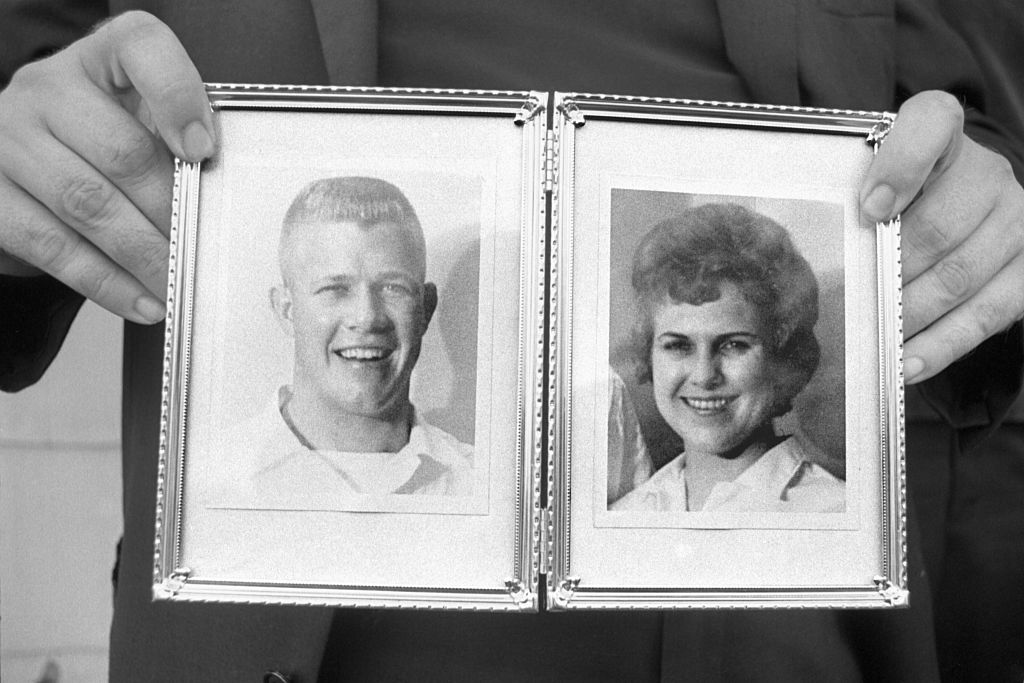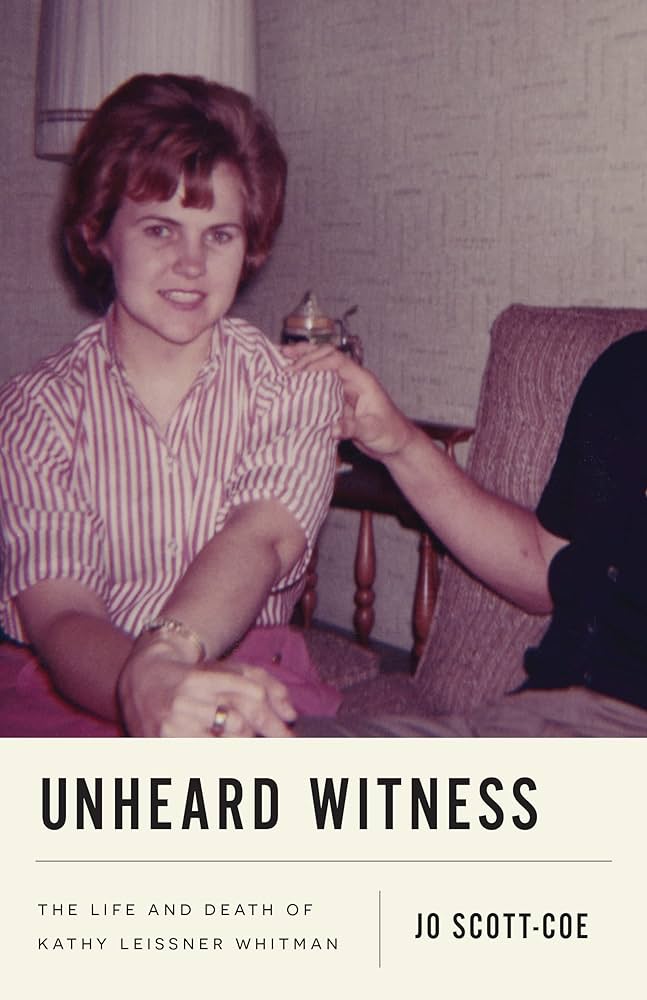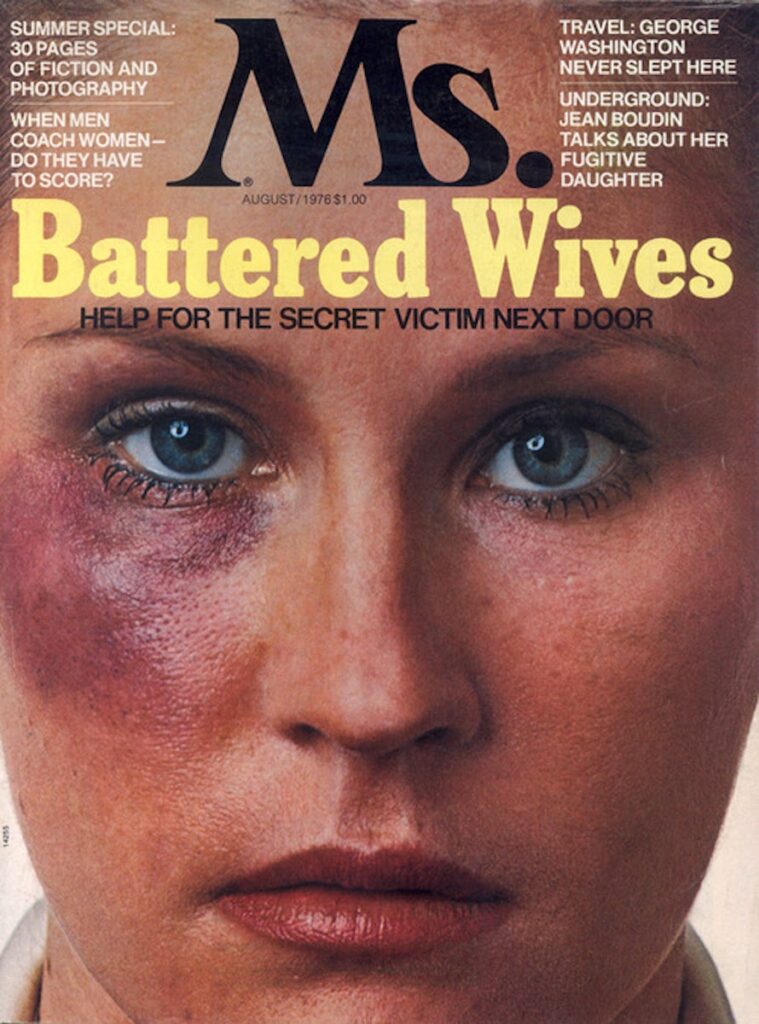Welcome to DU!
The truly grassroots left-of-center political community where regular people, not algorithms, drive the discussions and set the standards.
Join the community:
Create a free account
Support DU (and get rid of ads!):
Become a Star Member
Latest Breaking News
Editorials & Other Articles
General Discussion
The DU Lounge
All Forums
Issue Forums
Culture Forums
Alliance Forums
Region Forums
Support Forums
Help & Search
Women's Rights & Issues
Related: About this forumBringing Domestic Violence Victims Back to Life (trigger warning)
Bringing Domestic Violence Victims Back to Life (trigger warning)
11/5/2023 by Rob Okun
A new book from author Jo Scott-Coe explores the murders that preceded the first modern-day mass shooting.

Charles J. Whitman and his wife Kathleen Leissner Whitman in family album photos released by Whitman’s father, Charles A. Whitman, Jr. The younger Whitman was shot down by police after he gunned down his wife, his mother, and 13 other persons in a shooting spree in Austin, Texas.
(Bettmann Archives / Getty Images)
For many, the history of mass shootings in the U.S. began with Columbine in 1999. In the 24 years since, there have been hundreds of such shootings, from concerts to houses of worship, from workplaces to big box stores. But the first mass shooting of the modern era occurred in Austin, Texas, on Aug. 1, 1966. It was lunchtime on a Monday when a 25-year-old former Marine and architectural engineering student made his way to the observation deck of the tower on the campus at the University of Texas. Armed with a footlocker filled with guns, Charles Whitman started gunning people down, both on campus and in nearby streets. Before police killed him, Whitman would be responsible for the murder of 17 and the wounding of 31. But the tower murders weren’t the beginning of the carnage. The night before, while his mother and wife were sleeping, he had already stabbed them to death. Coverage of the campus massacre virtually eclipsed the women’s stories. But Unheard Witness: The Life and Death of Kathy Leissner Whitman, by Jo Scott-Coe, aims to change that. Published in October, this sensitive portrait of the killer’s wife pieces together the shards of her life as an accomplished young woman growing up with big dreams in rural Texas. It also stands in for the hundreds of thousands of abused women whose lives have been cut short, and whose stories are rarely told.

Ultimately, Unheard Witness is the story of a then-unnamed epidemic: domestic violence.
Unheard Witness: The Life and Death of Kathy Leissner Whitman by Jo Scott-Coe.
In the nearly six decades since the Texas tower mass shooting, and despite countless accounts, it has rarely been seen for what it was: an early warning about the seemingly endless wave of mass shootings that plague us, and that have taken up permanent residency in the American psyche. In the 1960s, domestic violence was an invisible crime. The abuse being committed, primarily against women, was hidden behind closed doors in city apartments, rural farmhouses and suburban homes. Neither police nor clergy intervened.
As a student and wife at UT Austin, Kathy Leissner teetered between her burgeoning awareness as an independent woman, and the crushing constraints of being financially dependent on her husband. She was trapped, not wanting to be a product of the times, even though most men and women then agreed that husbands were kings of their castles. Although she recognized she was in an unhealthy relationship, she had little support, and certainly none of the services women in abusive relationships have today. Her younger brother, Nelson, preserved Kathy’s diaries and journals; he was always there for her. As were her parents, who saw the warning signs of her husband, Charles Whitman’s controlling behavior, but didn’t intervene.
. . . . .

Ms. magazine cover in August 1976. “Violence begins in the home, and it must end there,” said Gloria Steinem.
Estimates are that there are more than 65,000 women killed by men every year, according to writer-activist Rebecca Solnit. This ultimate erasure, femicide, often comes, “after years or decades of being silenced or erased in the home, in daily life, by threat and violence,” said Solnit. While some women are erased a bit at a time, and some all at once, fortunately, some do reappear: Kathy “reappeared” because her brother, Nelson, fiercely protected the primary documents that preserved his sister’s voice. More than bringing Kathy Leissner back to life, Unheard Witness reminds us that despite all the progress that’s been made since her murder in 1966—from shelters for abuse survivors and self-defense classes, to police trainings and batterer intervention groups holding men accountable—domestic violence remains a potentially lethal poison for which women have no vaccine. In bringing Kathy Leissner back to life, Jo Scott-Coe may now be helping to develop one.
https://msmagazine.com/2023/11/05/charles-whitman-domestic-violence-kathy-leissner/